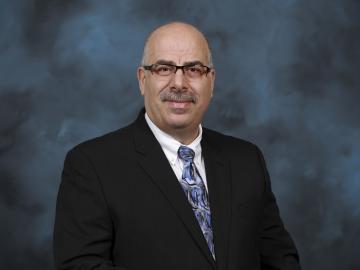Filter News
Area of Research
- (-) Fusion Energy (1)
- (-) National Security (9)
- (-) Neutron Science (17)
- Advanced Manufacturing (8)
- Biology and Environment (37)
- Building Technologies (1)
- Clean Energy (70)
- Computational Biology (1)
- Computational Engineering (2)
- Computer Science (4)
- Electricity and Smart Grid (1)
- Fusion and Fission (15)
- Isotopes (13)
- Materials (17)
- Materials for Computing (18)
- Mathematics (1)
- Nuclear Science and Technology (1)
- Quantum information Science (3)
- Sensors and Controls (1)
- Supercomputing (21)
- Transportation Systems (1)
News Topics
- 3-D Printing/Advanced Manufacturing (2)
- Artificial Intelligence (3)
- Biology (3)
- Biomedical (2)
- Chemical Sciences (1)
- Computer Science (6)
- Coronavirus (2)
- Cybersecurity (3)
- Environment (2)
- Fusion (1)
- High-Performance Computing (1)
- Materials (4)
- Materials Science (6)
- Microscopy (1)
- Nanotechnology (2)
- National Security (5)
- Neutron Science (15)
- Nuclear Energy (1)
- Physics (1)
- Quantum Computing (1)
- Quantum Science (3)
- Security (1)
- Space Exploration (1)
- Transportation (1)
Media Contacts
ORNL drone and geospatial team becomes first to map the Coca River in the Amazon basin as erosion and sediment threaten Ecuador’s lands.

Scientists at ORNL have developed 3D-printed collimator techniques that can be used to custom design collimators that better filter out noise during different types of neutron scattering experiments

Jack Orebaugh, a forensic anthropology major at the University of Tennessee, Knoxville, has a big heart for families with missing loved ones. When someone disappears in an area of dense vegetation, search and recovery efforts can be difficult, especially when a missing person’s last location is unknown. Recognizing the agony of not knowing what happened to a family or friend, Orebaugh decided to use his internship at the Department of Energy’s Oak Ridge National Laboratory to find better ways to search for lost and deceased people using cameras and drones.

Moe Khaleel has been selected to lead the National Sciences Security Directorate, or NSSD, at the Department of Energy’s Oak Ridge National Laboratory.

Using novel data sets and computing systems, researchers at ORNL are simulating how climate change affects the safety and security of the country.

A team of collaborators from ORNL, Google Inc., Snowflake Inc. and Ververica GmbH has tested a computing concept that could help speed up real-time processing of data that stream on mobile and other electronic devices.

A team led by the U.S. Department of Energy’s Oak Ridge National Laboratory demonstrated the viability of a “quantum entanglement witness” capable of proving the presence of entanglement between magnetic particles, or spins, in a quantum material.


Oak Ridge National Laboratory researchers have created a technology that more realistically emulates user activities to improve cyber testbeds and ultimately prevent cyberattacks.

ASM International recently elected three researchers from ORNL as 2021 fellows. Selected were Beth Armstrong and Govindarajan Muralidharan, both from ORNL’s Material Sciences and Technology Division, and Andrew Payzant from the Neutron Scattering Division.




